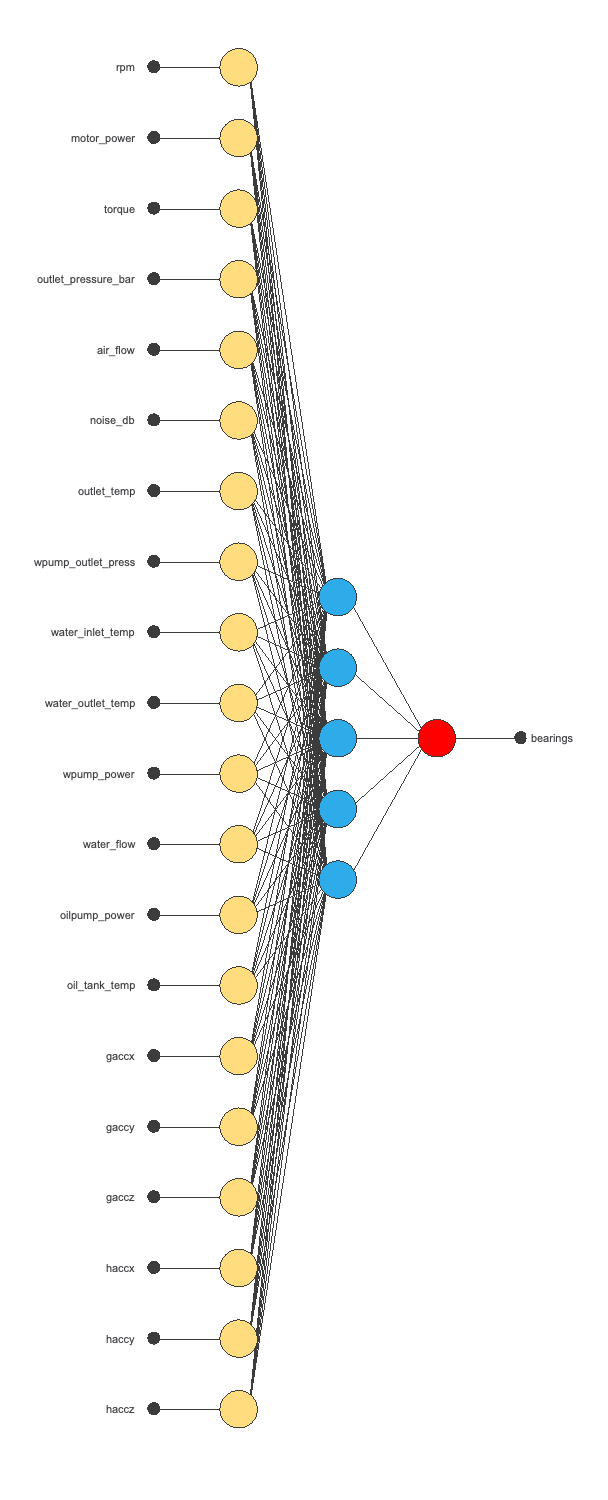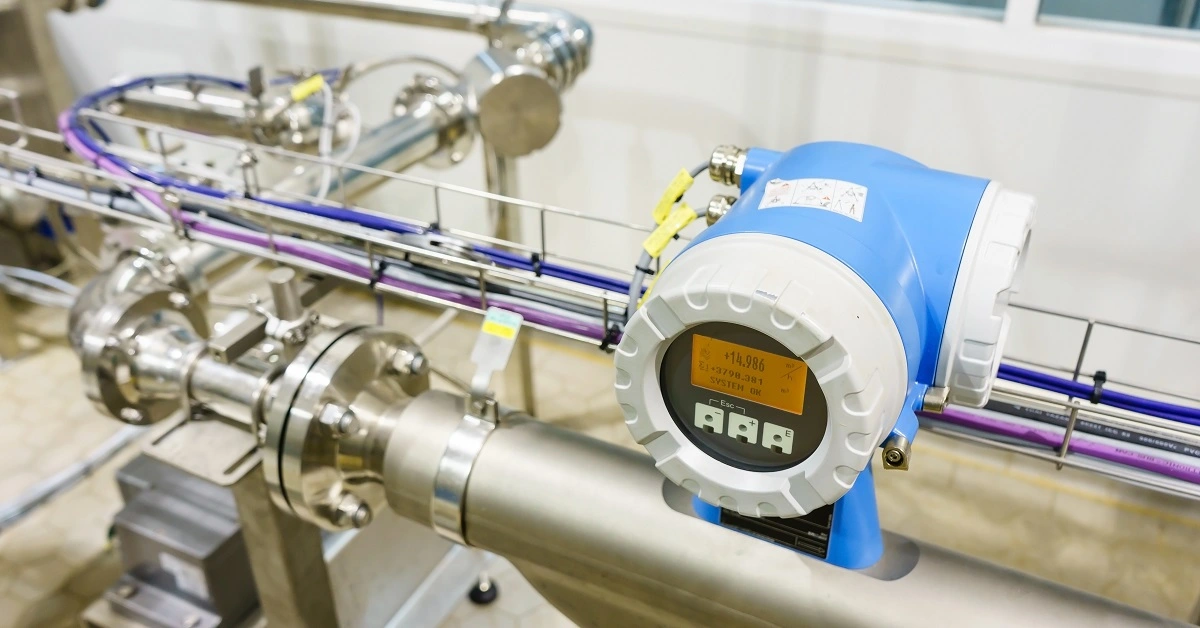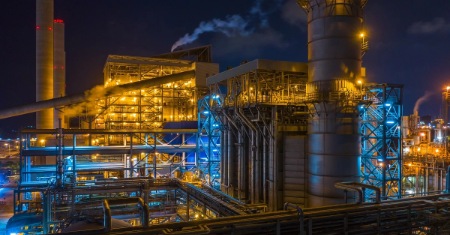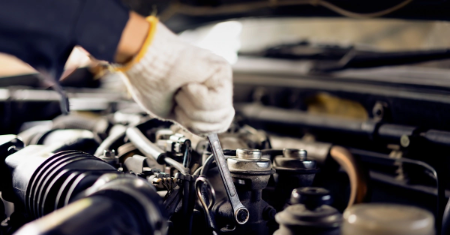Traditional methods for diagnosing and maintaining air compressor systems can be time-consuming and labor-intensive. To address this issue, we can employ artificial intelligence to predict potential failures and enhance the maintenance process for air compressors, ensuring optimal operation and reducing downtime. Here, we build a predictive maintenance model for identifying faulty parts in an air compressor system using machine learning.
In this article, we explore the use of machine learning to predict and maintain the performance of air compressor systems. Air compressors are essential devices that convert power into potential energy stored in compressed air, which can then be utilized for various applications such as powering pneumatic tools, inflating tires, and operating machinery. Ensuring air compressors’ optimal performance and longevity is crucial for many industries, and predictive maintenance can help identify potential failures and improve the maintenance process.
Contents
This example is solved with Neural Designer. To follow it step by step, you can use the free trial.
1. Application type
We will predict the bearings status in the air compressor system, a binary variable (0 or 1). Therefore, this is a classification project.
The goal here is to model the bearings’ status based on the features of the air compressor system for its subsequent use in predictive maintenance.
2. Data set
To achieve predictive maintenance for air compressor systems, we utilize a classified dataset designed explicitly for this purpose. This dataset contains a wide range of data collected from air compressor systems and is used to train a neural network to predict potential issues with high accuracy.
The dataset includes parameters such as motor RPM, motor power, torque, outlet pressure, and oil pump power, among others. These parameters are crucial for understanding the relationships between the variables and the target outcome in predictive maintenance studies.
The original dataset contains four possible target variables: Bearings Status, Water Pump Status, Radiator Status, and Exhaust Valve Status. We have chosen to focus on predicting the Bearings Status for this study, but the same approach could be applied to any of the other three target variables.
The first step involves preparing the data set, which serves as the primary source of information for the problem. There are three main components to configure:
- Data source.
- Variables.
- Instances.
Data source
The data file air_compressor_maintenance.csv contains the information for the air compressor example. This dataset consists of measurements taken from a compressor system supplying air to a factory production line, with 17 features collected in total. The dataset comprises 17 variables (columns) and 1000 instances (rows).
Variables
The features or variables included in the dataset are as follows:
- RPM: Indicates the number of rotations per minute for the motor.
- Motor Power: Measures the power consumption of the electric motor in kilowatts.
- Torque: Provides the torque produced by the motor in Newton-meter.
- Outlet Pressure Bar: Denotes the outlet pressure of compressed air in bars.
- Air Flow: Displays the flow rate of compressed air in cubic meters per minute.
- Noise dB: Represents the noise level of the compressor system in decibels.
- Outlet Temp: Shows the outlet temperature of the compressed air in degrees Celsius.
- Water Pump Outlet Pressure: Gives the outlet pressure of the water pump in bars.
- Water Inlet Temp: Specifies the inlet temperature of cooling water in degrees Celsius.
- Water Outlet Temp: Provides the outlet temperature of cooling water in degrees Celsius.
- Water Pump Power: Measures the power consumption of the water pump in kilowatts.
- Water Flow: Indicates the cooling water flow rate in cubic meters per minute.
- Oil Pump Power: This represents the power consumption of the oil pump in kilowatts.
- Oil Tank Temp: Shows the temperature of the oil tank in degrees Celsius.
- Ground Acceleration: Represents the acceleration experienced by the compressor at its mounting point, measured in the X, Y, and Z directions in meters per second squared.
- Head Acceleration: Refers to the acceleration value measured at the compressor head bolt or upper cooling fin in the X, Y, and Z directions, typically expressed in gravitational units.
- Bearings Status: Indicates the condition of the bearings in the motor and compressor system. The values can be ‘Ok’ for properly functioning bearings or ‘Noise’ for bearings that may need maintenance or replacement due to wear or damage affecting the performance and efficiency of the compressor.
All variables in the study are inputs, except for the chosen target variable, Bearings Status, which is the output we aim to extract for this machine learning study. However, if desired, the same methodology could be applied to the other three target variables: Water Pump Status, Radiator Status, and Exhaust Valve Status.
Instances
The instances are divided into training, selection, and testing subsets. They represent a certain percentage of the original instances and are randomly split. The exact percentages depend on the chosen data split approach.
Variables distributions
We can perform a few related analytics once the data set has been set. First, we check the provided information and ensure the data is quality.
The data distributions show the bearing condition percentages.

Please note that the actual distributions may vary depending on the nature of the data collected in the air compressor dataset.
Inputs-targets correlations
The inputs-targets correlations might indicate which factors strongly influence the motor and compressor system bearings status.

From the chart, we can identify which features significantly influence bearing conditions. This information can help us better understand the relationships between the variables and the target in the predictive maintenance study.
3. Neural network
The second step is to choose a neural network to represent the classification function.
For classification problems, it is composed of:
The scaling layer contains the statistics on the input calculated from the data file and the method for scaling the input variables. The minimum and maximum scaling methods are set here, but the mean and standard deviation scaling methods produce similar results.
We set one perceptron layer, with 4 neurons as a first guess, having the hyperbolic tangent (tanh) as the activation function.
The following figure shows the neural network used in this example.

The yellow circles represent scaling neurons, the blue circles represent perceptron neurons, and the red circles represent probabilistic neurons. The number of inputs is 20, and the number of outputs is 1.
4. Training strategy
The training strategy is applied to the neural network to obtain the best possible performance. It is composed of two things:
- A loss index.
- An optimization algorithm.
The selected loss index is the normalized squared error (NSE) with L2 regularization. The normalized squared error is helpful in applications where the targets are balanced, as in this case.
The error term fits the neural network to the training instances of the data set. The regularization term makes the model more stable and improves generalization, so our model will be more predictive.
The selected optimization algorithm that minimizes the loss index is the quasi-Newton method.
The following chart shows how the training (blue) and selection (orange) errors decrease with the training epochs.

The final training and selection errors are training error = 0.0012 NSE (blue) and selection error = 0.0028 NSE (orange), respectively. Considering the low values of the training and selection errors, the model already demonstrates good performance.
5. Testing analysis
The next step is to perform a test analysis to validate the predictive capability of the neural network.
The next step is to perform a testing analysis to validate the predictive capability of the neural network. The testing compares the values provided by this technique to the observed values.
The ROC curve is a good measure of the precision of a binary classification model.
Our focus is on evaluating the area under the curve (AUC). A perfect classifier would have an AUC=1, which implies excellent prediction capabilities, and a random one would have AUC=0.5, indicating no better than random chance.

In this case, our model has an AUC = 0.998, meaning it has achieved practically perfect classification and prediction capabilities.
We can also look at the confusion matrix. Below, we show the elements of this matrix for a decision threshold = 0.43.

From the above confusion matrix, we can calculate the following binary classification tests:
- Classification accuracy: 99% (ratio of correctly classified samples).
- Error rate: 1% (ratio of misclassified samples).
- Sensitivity: 98.8% (percentage of actual positive classified as positive).
- Specificity: 100% (percentage of actual negative classified as negative).
6. Model deployment
Once we have tested the air compressor bearings status classification model, we can use it to evaluate the probability of a specific bearing status:
For instance, consider an air compressor with the following features:
- rpm: 1499.52
- motor_power: 6984.88
- torque: 49.186
- outlet_pressure_bar: 4.06
- air_flow: 754.67
- noise_db: 53.41
- outlet_temp: 118.86
- wpump_outlet_press: 2.80
- water_inlet_temp: 83.02
- water_outlet_temp: 96.64
- wpump_power: 222.19
- water_flow: 53.71
- oilpump_power: 300.48
- oil_tank_temp: 46.24
- gaccx: 0.60
- gaccy: 0.35
- gaccz: 3.92
- haccx: 1.10
- haccy: 1.35
- haccz: 3.50
- bearings (1 = OK): 1.00
The probability of ‘OK’ for these bearings is 100%.
We can export the mathematical expression of bearings status to facilitate the work of classification. This expression is written below.
scaled_rpm = (rpm-1499.52002)/707.6820068scaled_motor_power = (motor_power-6984.879883)/4269.279785scaled_torque = (torque-49.18610001)/18.70669937scaled_outlet_pressure_bar = (outlet_pressure_bar-4.054049969)/1.862759948scaled_air_flow = (air_flow-754.6740112)/442.7430115scaled_noise_db = (noise_db-53.41210175)/8.05535984scaled_outlet_temp = (outlet_temp-118.8550034)/19.1201992scaled_wpump_outlet_press = (wpump_outlet_press-2.7996099)/0.4552739859scaled_water_inlet_temp = (water_inlet_temp-83.021698)/18.64500046scaled_water_outlet_temp = (water_outlet_temp-96.63659668)/20.55730057scaled_wpump_power = (wpump_power-222.1849976)/3.774529934scaled_water_flow = (water_flow-53.70819855)/6.587259769scaled_oilpump_power = (oilpump_power-300.4840088)/0.4087029994scaled_oil_tank_temp = (oil_tank_temp-46.23770142)/0.1961389929scaled_gaccx = (gaccx-0.6017889977)/0.05871869996scaled_gaccy = (gaccy-0.3496670127)/0.04066679999scaled_gaccz = (gaccz-3.923069954)/1.610129952scaled_haccx = (haccx-1.101250052)/0.05854640156scaled_haccy = (haccy-1.350039959)/0.0408712998scaled_haccz = (haccz-3.49503994)/0.8176670074perceptron_layer_1_output_0 = np.tanh( 0.901466 + (scaled_rpm*0.469466) + (scaled_motor_power*0.0743812) + (scaled_torque*-0.14942) + (scaled_outlet_pressure_bar*-0.101016) + (scaled_air_flow*-0.466583) + (scaled_noise_db*-1.74041) + (scaled_outlet_temp*0.738268) + (scaled_wpump_outlet_press*0.422983) + (scaled_water_inlet_temp*0.787527) + (scaled_water_outlet_temp*0.284194) + (scaled_wpump_power*0.287301) + (scaled_water_flow*-1.30252) + (scaled_oilpump_power*0.128188) + (scaled_oil_tank_temp*0.656645) + (scaled_gaccx*-0.40253) + (scaled_gaccy*-0.0149995) + (scaled_gaccz*-0.33298) + (scaled_haccx*-0.420607) + (scaled_haccy*-0.270557) + (scaled_haccz*-0.362505) )
perceptron_layer_1_output_1 = np.tanh( 0.32231 + (scaled_rpm*-0.0899539) + (scaled_motor_power*-0.104127) + (scaled_torque*-0.175207) + (scaled_outlet_pressure_bar*-0.122444) + (scaled_air_flow*-0.926577) + (scaled_noise_db*-1.52257) + (scaled_outlet_temp*0.865686) + (scaled_wpump_outlet_press*0.368702) + (scaled_water_inlet_temp*0.691098) + (scaled_water_outlet_temp*0.943445) + (scaled_wpump_power*0.566609) + (scaled_water_flow*-1.95932) + (scaled_oilpump_power*-0.265151) + (scaled_oil_tank_temp*0.928677) + (scaled_gaccx*-0.142292) + (scaled_gaccy*-0.126341) + (scaled_gaccz*-0.20502) + (scaled_haccx*-0.0503535) + (scaled_haccy*0.0329963) + (scaled_haccz*-0.346429) )
perceptron_layer_1_output_2 = np.tanh( 0.886566 + (scaled_rpm*1.12165) + (scaled_motor_power*0.071234) + (scaled_torque*-0.500776) + (scaled_outlet_pressure_bar*-0.248816) + (scaled_air_flow*0.10544) + (scaled_noise_db*-2.44581) + (scaled_outlet_temp*0.681027) + (scaled_wpump_outlet_press*0.206632) + (scaled_water_inlet_temp*0.36686) + (scaled_water_outlet_temp*-0.122395) + (scaled_wpump_power*-0.119946) + (scaled_water_flow*-0.469015) + (scaled_oilpump_power*-0.0137544) + (scaled_oil_tank_temp*0.222672) + (scaled_gaccx*-0.21359) + (scaled_gaccy*0.00372433) + (scaled_gaccz*0.0634309) + (scaled_haccx*0.0104647) + (scaled_haccy*-0.090681) + (scaled_haccz*0.0527847) )
perceptron_layer_1_output_3 = np.tanh( 1.73749 + (scaled_rpm*1.13836) + (scaled_motor_power*0.264973) + (scaled_torque*-0.45276) + (scaled_outlet_pressure_bar*-0.374484) + (scaled_air_flow*-0.911772) + (scaled_noise_db*-3.29918) + (scaled_outlet_temp*0.698172) + (scaled_wpump_outlet_press*-0.0900097) + (scaled_water_inlet_temp*0.436472) + (scaled_water_outlet_temp*0.674326) + (scaled_wpump_power*0.362162) + (scaled_water_flow*-0.995449) + (scaled_oilpump_power*0.17563) + (scaled_oil_tank_temp*0.654069) + (scaled_gaccx*-0.155581) + (scaled_gaccy*0.0901928) + (scaled_gaccz*-0.106409) + (scaled_haccx*-0.0617506) + (scaled_haccy*0.0879432) + (scaled_haccz*0.0481439) )
perceptron_layer_1_output_4 = np.tanh( 0.0951512 + (scaled_rpm*0.143308) + (scaled_motor_power*0.251458) + (scaled_torque*0.125892) + (scaled_outlet_pressure_bar*0.151768) + (scaled_air_flow*1.4004) + (scaled_noise_db*2.28701) + (scaled_outlet_temp*-1.01135) + (scaled_wpump_outlet_press*-0.850055) + (scaled_water_inlet_temp*-1.04786) + (scaled_water_outlet_temp*-0.984143) + (scaled_wpump_power*-0.722475) + (scaled_water_flow*2.31838) + (scaled_oilpump_power*0.490667) + (scaled_oil_tank_temp*-0.791984) + (scaled_gaccx*-0.0749758) + (scaled_gaccy*-0.179896) + (scaled_gaccz*0.165896) + (scaled_haccx*-0.136697) + (scaled_haccy*-0.110109) + (scaled_haccz*0.11758) )
probabilistic_layer_combinations_0 = 2.87135 +1.37052*perceptron_layer_1_output_0 -0.11211*perceptron_layer_1_output_1 +4.40601*perceptron_layer_1_output_2 +5.99676*perceptron_layer_1_output_3 +1.76189*perceptron_layer_1_output_4
bearings = 1.0/(1.0 + np.exp(-probabilistic_layer_combinations_0) )
References
- Predictive Maintenance Dataset for Air Compressor System by Ahmet Okudan on Kaggle.



